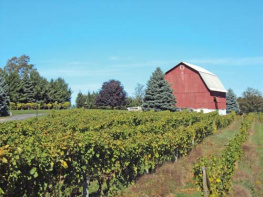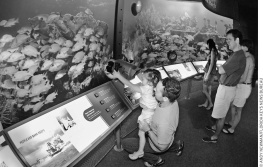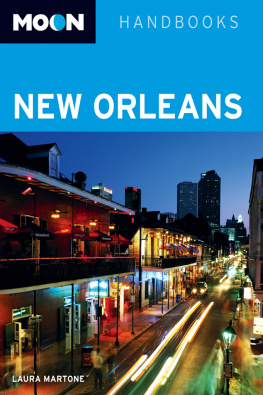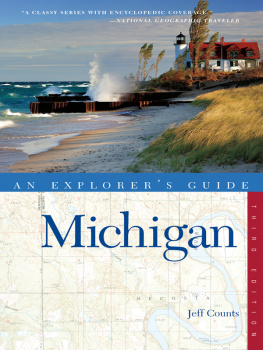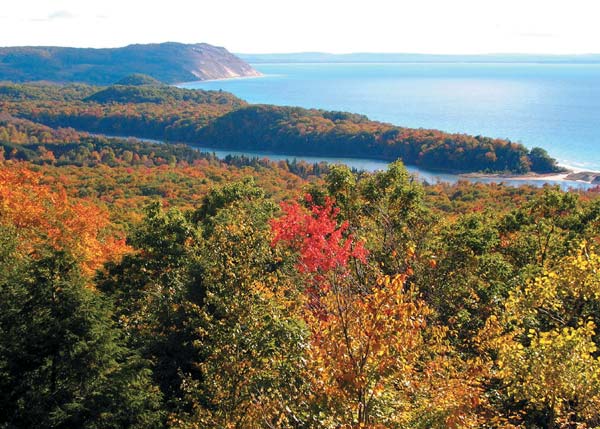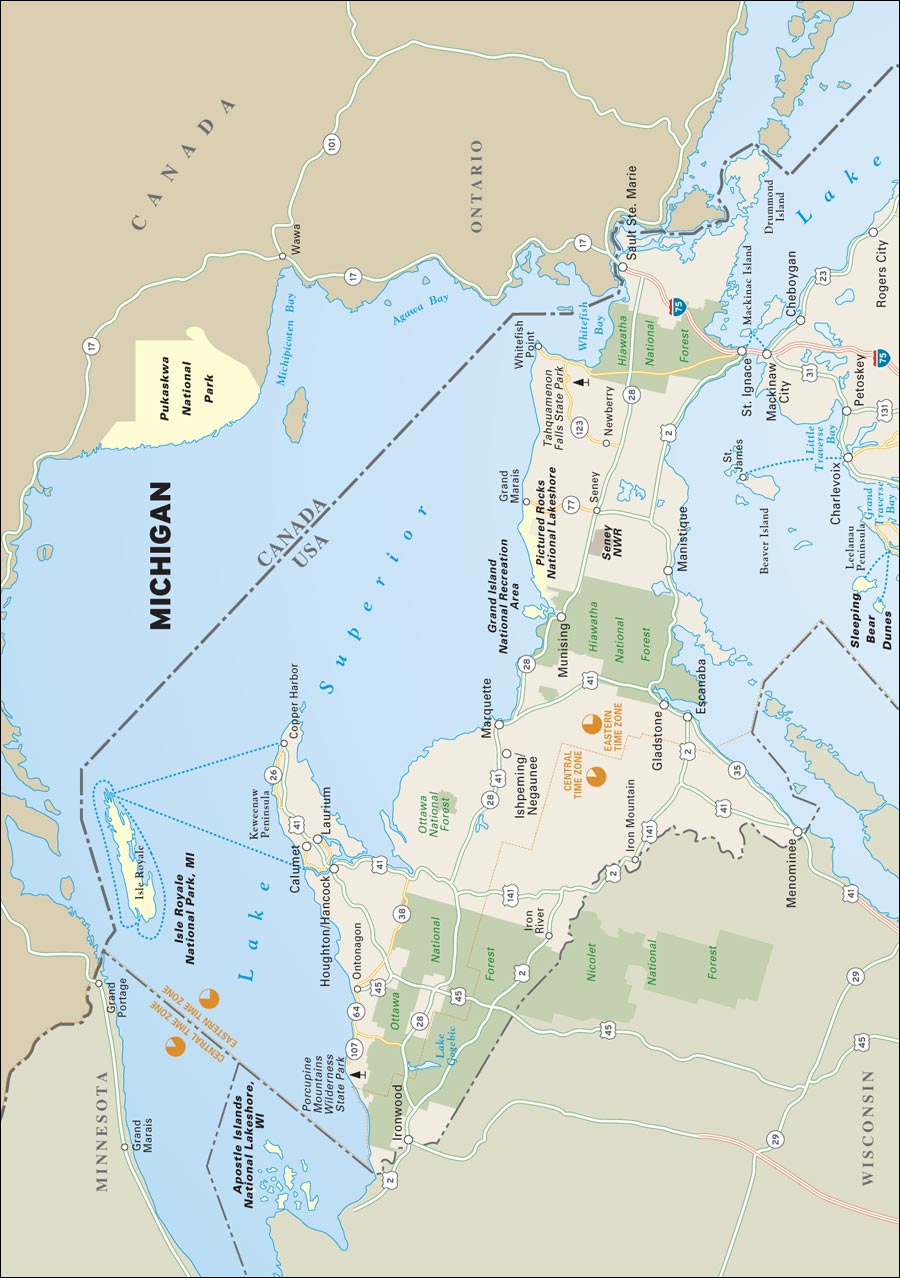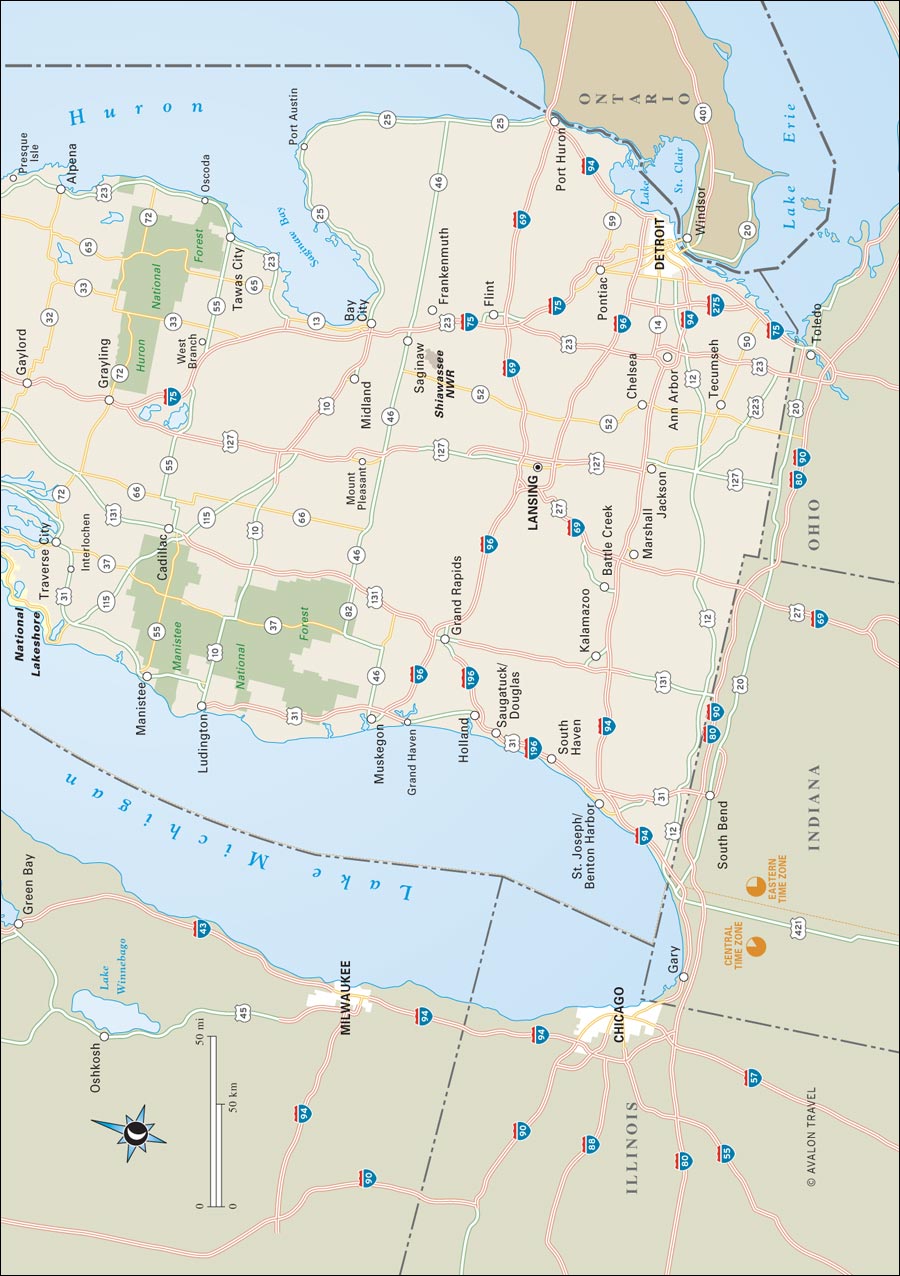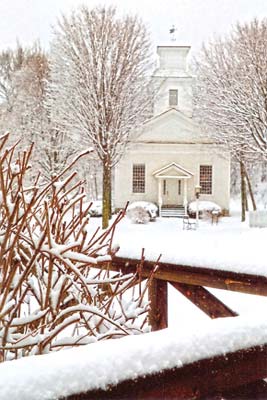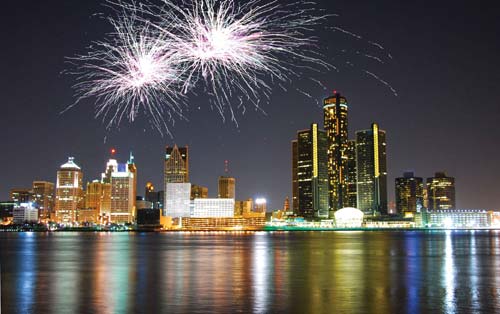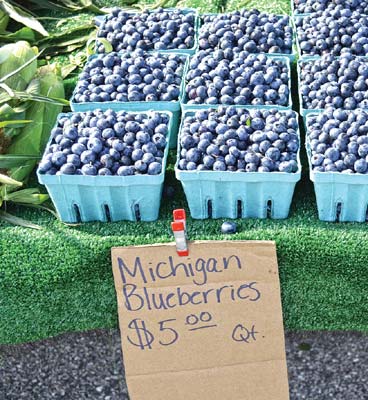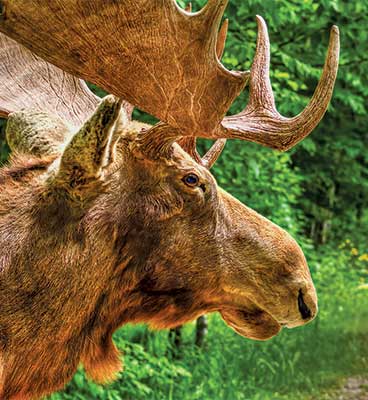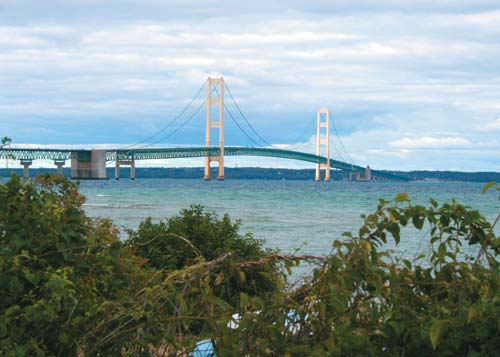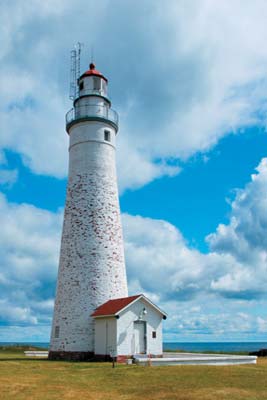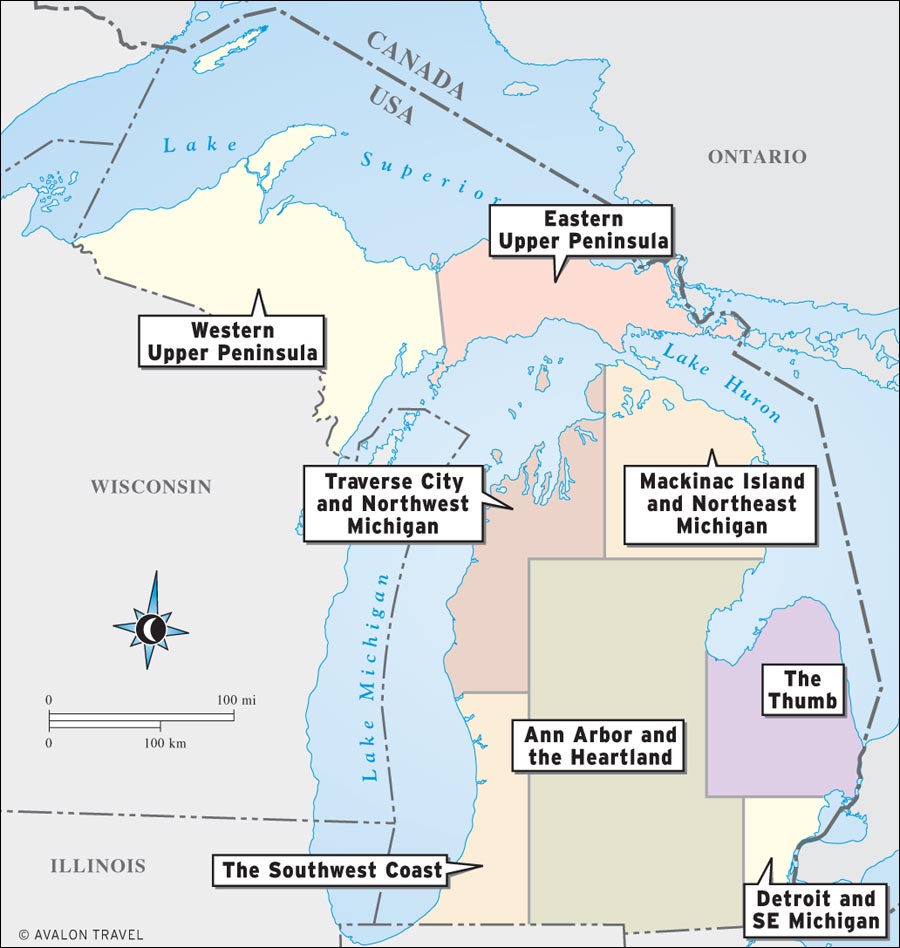
MICHIGAN
LAURA MARTONE
DISCOVER
Michigan
Michigan, a state known mainly for motors and Motown, possesses much diversity; its offerings are varied and often unexpected. Boasting more than 11,000 inland lakes, this multifaceted place also contains countless art galleries, award-winning wineries, and championship golf courses, and the length of its lighthouse-studded coastline is second only to Alaska.
Out-of-towners who consider it a typical Midwestern state, with frigid winters and flat cornfields, will be surprised. Though winters are indeed cold, the topography is amazingly manifold: a dramatically changing landscape of windswept beaches, rushing rivers, pine forests, remote islands, rugged mountains, impressive waterfalls, enormous sand dunes, and surrounding lakes so massive they resemble never-ending seas.
Unlike the urban metropolis of Detroit, most of Michigan has a small-town vibe, especially in the north. On a typical summer day, you could spend the morning on the shores of Lake Michigan, watching sailboats drift on the vibrant blue waters; then explore quaint coastal communities like Petoskey or Charlevoix; and finish the afternoon by picking wild blueberries amid the shady pines of northeastern Michigan.
While most tourists visit in spring and summer, winters have grown popular, too. Despite bitter cold and heavy snowfalls, adventurers enjoy skating across frozen lakes, riding snowmobiles through glistening forests, or braving the isolated hinterlands of the Upper Peninsula. Of course, little compares to traveling along serpentine country roads in autumn, flanked by apple orchards and crimson maple trees.
Divided into two extremely distinct peninsulas the mitten-shaped Lower Peninsula and the breathtaking Upper Peninsula Michigan is the only U.S. state that is surrounded by four of the five Great Lakes. How apt that its name is derived from the Native American word michigama, meaning large lake and that its long been known as the Great Lakes State.
The Lower Peninsula boasts a wealth of rural areas, nostalgic villages, college campuses, resort towns, and the urban centers of Detroit and Flint. Places like Traverse City are also favored by tourists, and yet the Upper Peninsula a vast tract of forests, beaches, and mountains has remained elusive to many. In fact, the Upper Peninsula is often overlooked by Michiganders as much as the rest of the nation.
The key to appreciating Michigan is to embrace its diversity. Given so much to see and experience, your love affair with this remarkable state will forever evolve.
Where to Go
Detroit and Southeast Michigan
When considering Detroit, many think of both its musical and automotive heritage as well as its reputation for crime and corruption. Visitors are often surprised by the cultural attractions that abound in southeastern Michigan, from ethnic enclaves like Hamtramck to impressive museums like The Henry Ford. Detroit is also ideal for those seeking an active nightlife; the city boasts three major casino resorts, in addition to one in nearby Windsor, Canada.
The Thumb
This region sees fewer crowds than the towns along Lake Michigan. Travelers who appreciate a slower pace and more old-fashioned vibe will enjoy fishing in Lake Huron, touring ancient petroglyphs, strolling through small coastal villages, exploring Frankenmuth (a Bavarian-style village known for its year-round Christmas store), observing birds in the Shiawassee National Wildlife Refuge, and visiting historic sites within the region.
Ann Arbor and the Heartland
This is the only part of Michigan not bordered by at least one of the Great Lakes. Still, this vast region contains college sports teams, scenic lakes, unique cultural attractions like Kalamazoos Air Zoo, and some of the states largest cities. The Heartland could keep you busy for weeks, especially once youve discovered the enormous casino in Mount Pleasant.
The Southwest Coast
Michigans most compact region, this shoreline is certainly the easiest to visit. Traveling from Harbor Country to the White Lake area requires less than a three-hour drivebut oh, what a drive! Along the way, youll spy sand dunes, lighthouses, resort towns, art galleries, coastal state parks, and the states only major amusement park. This region also constitutes one of two key wine-producing areas in the state.
Traverse City and Northwest Michigan
Every summer, tourists flock to Traverse City, the self-proclaimed Cherry Capital of the World. The surrounding area is popular among visitors due to the wondrous Sleeping Bear Dunes, the wild rivers of Manistee National Forest, the wineries of the Leelanau Peninsula, and the lovely bays, lakes, and beaches. Northwest Michigan is also known for its superb golf courses and ski resorts.
Next page
